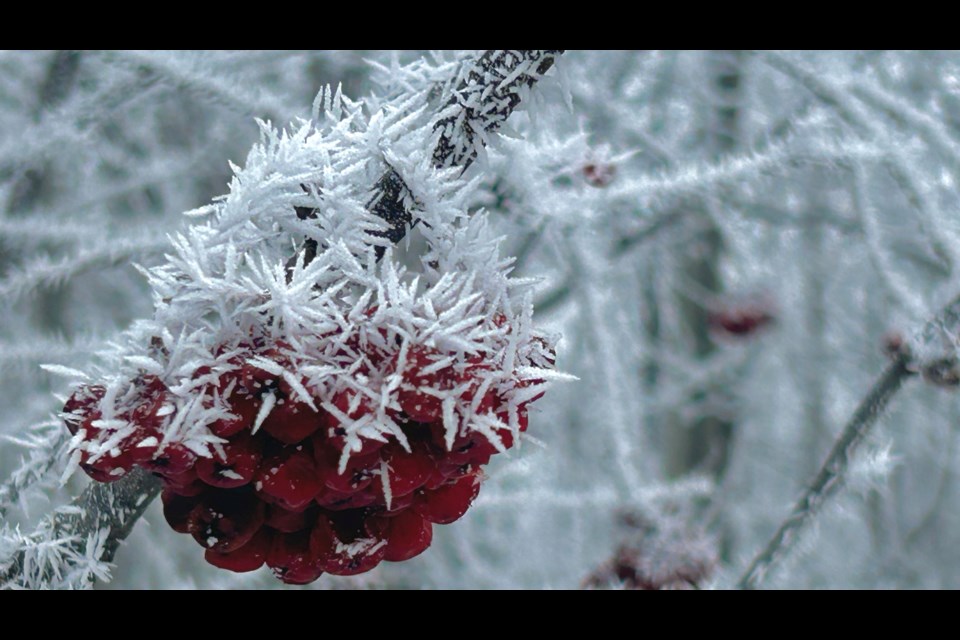Editor's note: Fog in the Blind River area on Friday night brought perfect conditions for hoar frost on Saturday morning so we thought our readers might enjoy this story and photos of similar conditions found that day in northern Michigan.
The past couple of mornings, the area woke up to some beauty produced by Mother Nature.
These pictures were taken midday Sunday in Sault Ste. Marie, MI when the sun broke out and before the beautiful landscape melted away.
Delicate ice crystals formed on exposed objects, such as branches, shrubs and tall grass.
There are two names for this, rime and hoar frost.
What most of the area saw was hoar frost.
Rime and hoar frost look similar and can be a challenge to differentiate, even to meteorologists.
The differences between the two involve the state of the water molecule before it freezes, as well as the water source itself.
With rime ice, super-cooled water droplets from freezing fog transition from liquid to solid upon direct contact with a surface at or below 32 degrees.
There are two types of rime ice. Hard rime develops at colder temperatures and stronger winds that can coat trees solid in ice. There is also soft rime which develops when winds are light and creates needle-like crystals.
Hoar frost on the other hand develops on cold, clear nights when gas water vapor transitions directly to solid ice crystals through the process of direct deposition. Snow on the ground can release moisture that promotes hoar frost growth.
Whether you see rime ice or hoar frost, they both produce beautiful winter scenery, especially when the sun is shining brightly like it did earlier today.
